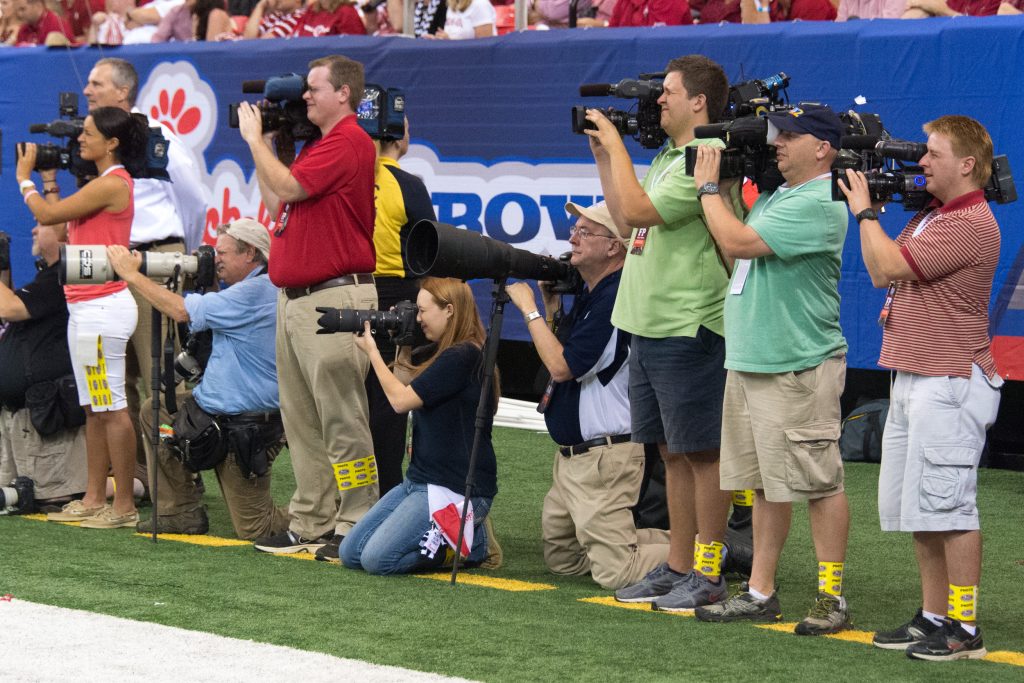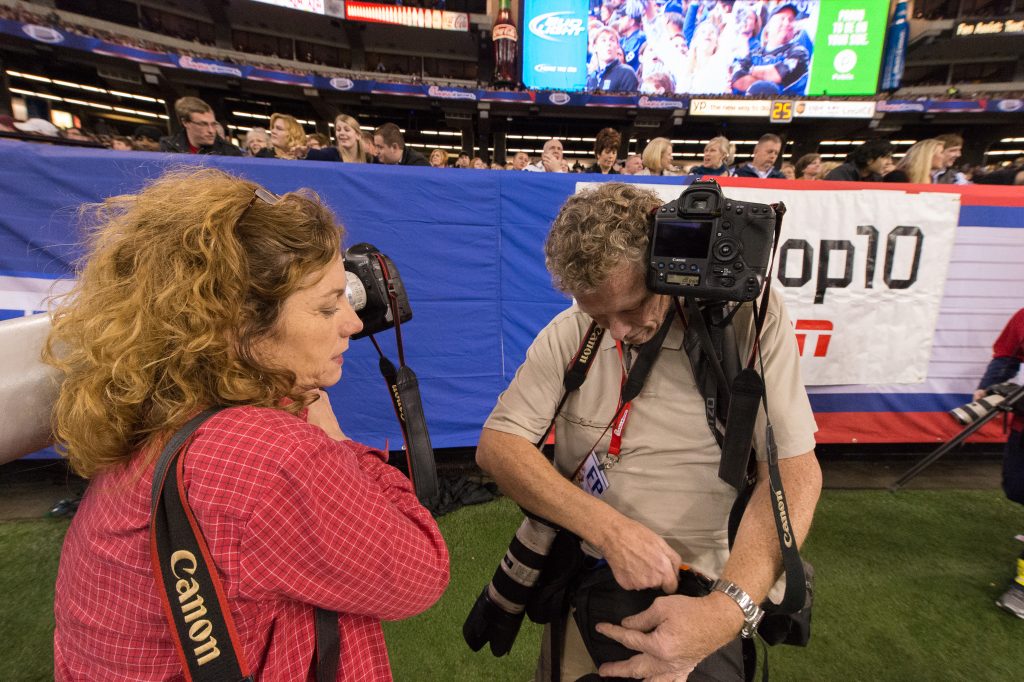The photo above is the press room, where editors will stay throughout the game editing photographers’ work. During half-time and after the game, photographers will help edit more images for those photo galleries we find ourselves swiping online.
In the fast-paced world of photography, where every click captures a moment, the art of processing images often gets lost in the shuffle. But what if I told you there’s a way to embrace the simplicity of the film era while harnessing the power of digital technology? Let’s take a trip down memory lane to explore how some photographers can benefit from adopting a more streamlined approach to their digital workflow.
Back in the film days, photographers shooting transparency film dropped off their rolls at the lab and picked up their slides – no darkroom required. Wedding photographers, in particular, relied on professional labs to process their color-negative film and produce prints. Manipulating images was a rarity compared to today’s digital editing frenzy.

During major sporting events, news outlets often designate a photographer to take on the role of editor. In the bustling press rooms of playoffs, final four games, or the Super Bowl, you’ll find these editors stationed at computers, meticulously sorting through images in real time. With runners darting back and forth between the field or court and the editor’s desk, memory cards are shuttled for immediate review. These editors play a crucial role in selecting the most compelling images, crafting captivating captions, and swiftly delivering them to their respective media outlets for publication – whether online or in print. It’s a high-pressure environment where every second counts and the ability to make quick decisions and identify standout shots is paramount.

As someone who managed a professional lab while pursuing a master’s degree in communication, I witnessed firsthand how years of experience shooting and processing film translated seamlessly into helping others with their photos. Today, I’ve been assisting individuals and organizations in creating searchable online image libraries – a modern-day equivalent to the film processing days.
Recently, I’ve encountered photographers with a backlog of RAW images sitting untouched on memory cards. They long for the simplicity of shooting and letting someone else handle the processing – a practice reminiscent of the film era. During major sporting events, news outlets assign photographers’ roles as editors, with runners shuttling memory cards to and from the field for real-time image selection and publication.
Photographers proficient in digital workflow can extend their expertise to others in the field. Outsourcing image processing can be a game-changer for those who enjoy capturing moments but dread the post-processing work. It’s time for photographers to realize that just because others handle their image processing doesn’t mean they can’t do the same – perhaps even better.
Enter AI services, the digital age’s modern-day darkroom assistants. These services offer quick turnaround times, and some even analyze your editing style in Lightroom and apply it to your images. You can also choose from various preset styles inspired by other photographers, further streamlining your workflow and ensuring consistency across your portfolio.
So, fellow photographers, let’s have an “Ah Ha!” moment together. Embracing the simplicity of the film era doesn’t mean reverting to outdated practices – it means leveraging modern technology to streamline our workflow and focus on what we do best: capturing unforgettable moments through our lenses. Let’s shoot, upload, and let AI or fellow photographers handle the rest, freeing us to do what we love most – telling stories through our images.

